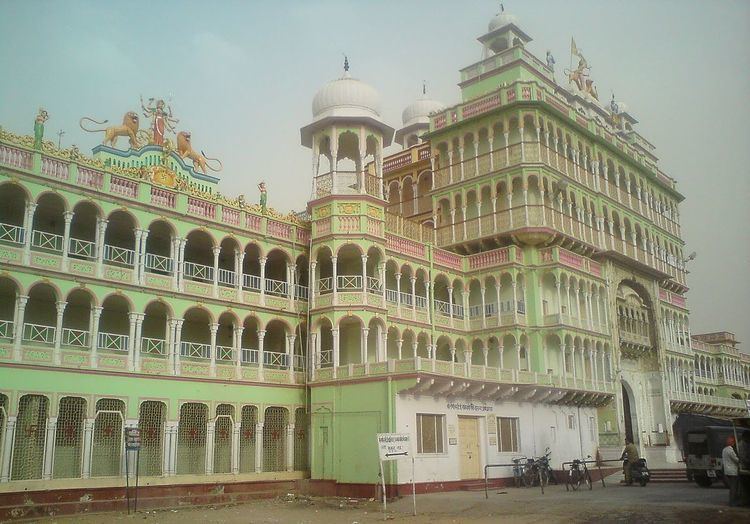Other names Dadi Maa Country India Phone 01592 232 755 | Devanagari राणी सती मंदिर झुंझुनू Website www.dadisati.in | |
 | ||
Similar Shekhawati, Khatushyam, Bagar - Jhunjhunu, Khetri Mahal, Salasar Balaji Profiles | ||
Rani sati temple birmitrapur thursday june 02 2016
Rani Sati Temple is a temple located in Jhunjhunu, Jhunjhunu district, in the state of Rajasthan, India. It is the largest temple in India devoted to Rani Sati, a Rajasthani woman who lived sometime between the 13th and the 17th century and committed sati (self-immolation) on her husband's death. Various temples in Rajasthan and elsewhere are devoted to her worship and to commemorate her act. Rani Sati is also called Narayani Devi and referred to as Dadiji (grandmother).
Contents
- Rani sati temple birmitrapur thursday june 02 2016
- Rani sati temple rajasthan art of rajasthan tourist place of rajasthan india hd
- Story
- Temple
- Observances and festivals
- References
Rani sati temple rajasthan art of rajasthan tourist place of rajasthan india hd
Story
The story of Rani Sati Dadi Maa starts from the time of Mahabharata. Narayani's wish of being married to Abhimanyu and her desire to be sati in her next life.
As granted by Lord Krishna, in her next life she was born as the daughter of Gursamal in the village of Dokwa in Rajasthan and was named Narayani. Abhimanyu was born in Hissar as a son of Jaliram and named Tandhan. Tandan and Narayani got married and were leading a peaceful life. He was in possession of a beautiful horse which was being eyed by the son of king of Hissar for quite some time. Tandan refused to hand over his precious horse to the king’s son.
The king’s son then decides to forcefully acquire the horse and thus challenges Tandan to a duel. Tandan fights the battle bravely and kills the king’s son. The enraged king thus kills Tandan in front of Narayani in the battle. Narayani, symbolic of female bravery and power, fights with the king and kills him. She then commanded Ranaji (the caretaker of the horse) to make immediate arrangements for her to be set ablaze along with her husband’s cremation.
Ranaji, playing a vital role in fulfilling her wish to be sati with her husband, is then blessed by Narayani that his name will be taken and worshiped along with her name and since then she is known as Rani Sati.
Temple
The temple is notable for not holding any paintings or statues of either female or male gods. Instead a trident depicting power and force is worshipped religiously by the followers. A portrait of Rani Sati is located in the pradhan mand. The temple is constructed from white marble and has colorful wall paintings.
In the complex of Rani Sati temple there is also the Lord Hanuman Temple, Sita Temple, Lord Ganesha Temple and Lord Shiva Temple. A regular 'Prasad' distribution takes place after every 'aarti'. As well as the main temple there are twelve smaller sati temples. A huge statue of Lord Shiva is located in the centre of the complex and is surrounded by green gardens. Inside the temple, the interiors are adorned with exquisite murals and glass mosaics depicting the entire history of the place.
Observances and festivals
Hundreds of devotees visit the temple every day. An elaborate aarti is performed at the temple two times a day. These are:
A special Poojan utsav is held on the occasion of Bhadra Amavasya: The 15th day of the dark half of Bhadra month in the Hindu calendar is of special significance to the temple.
